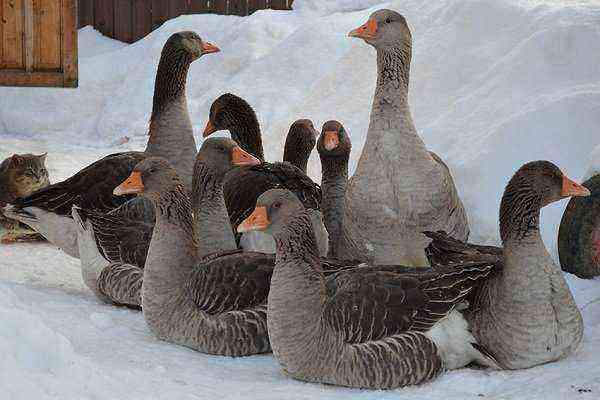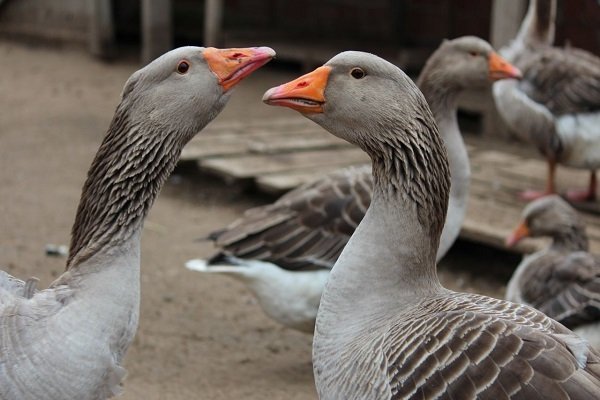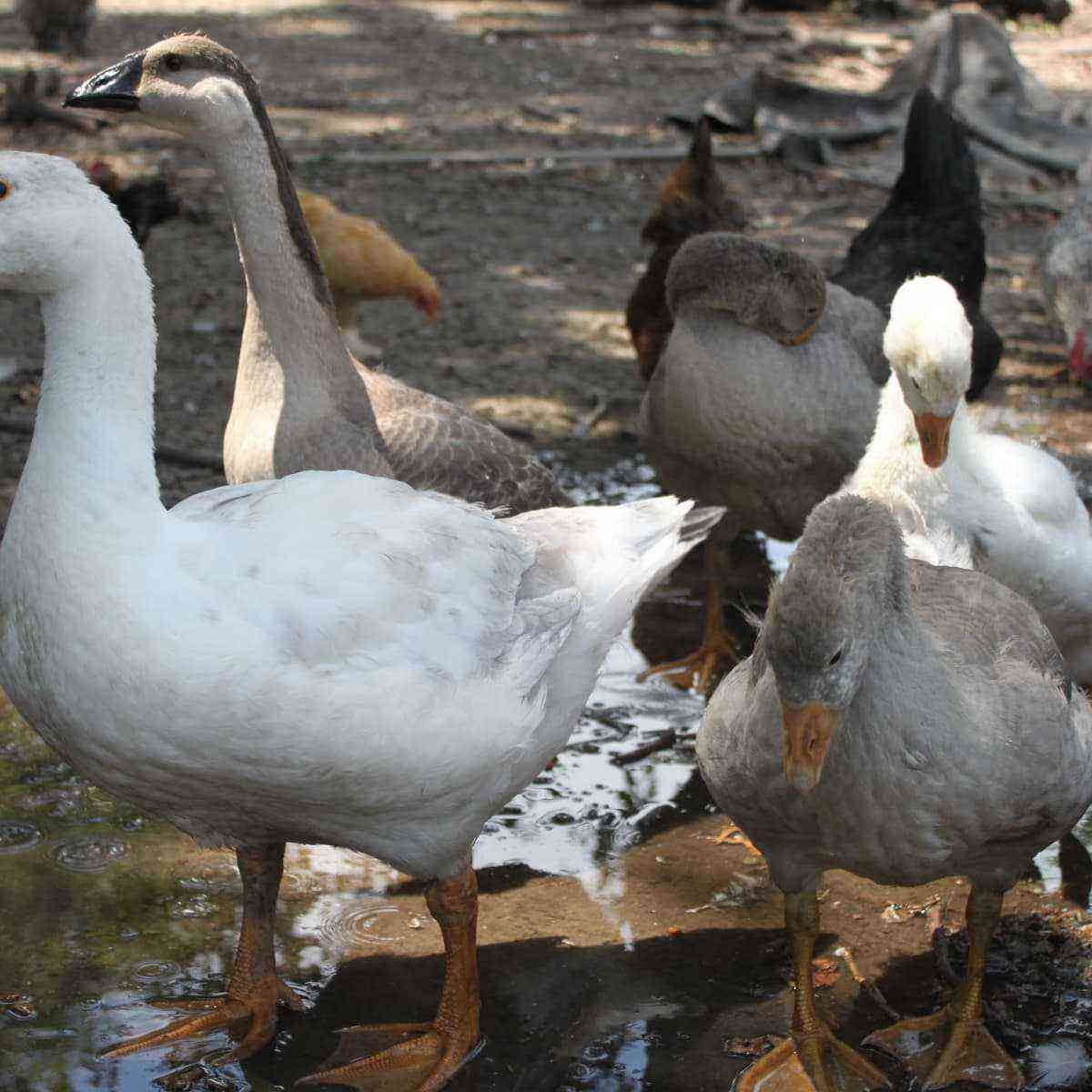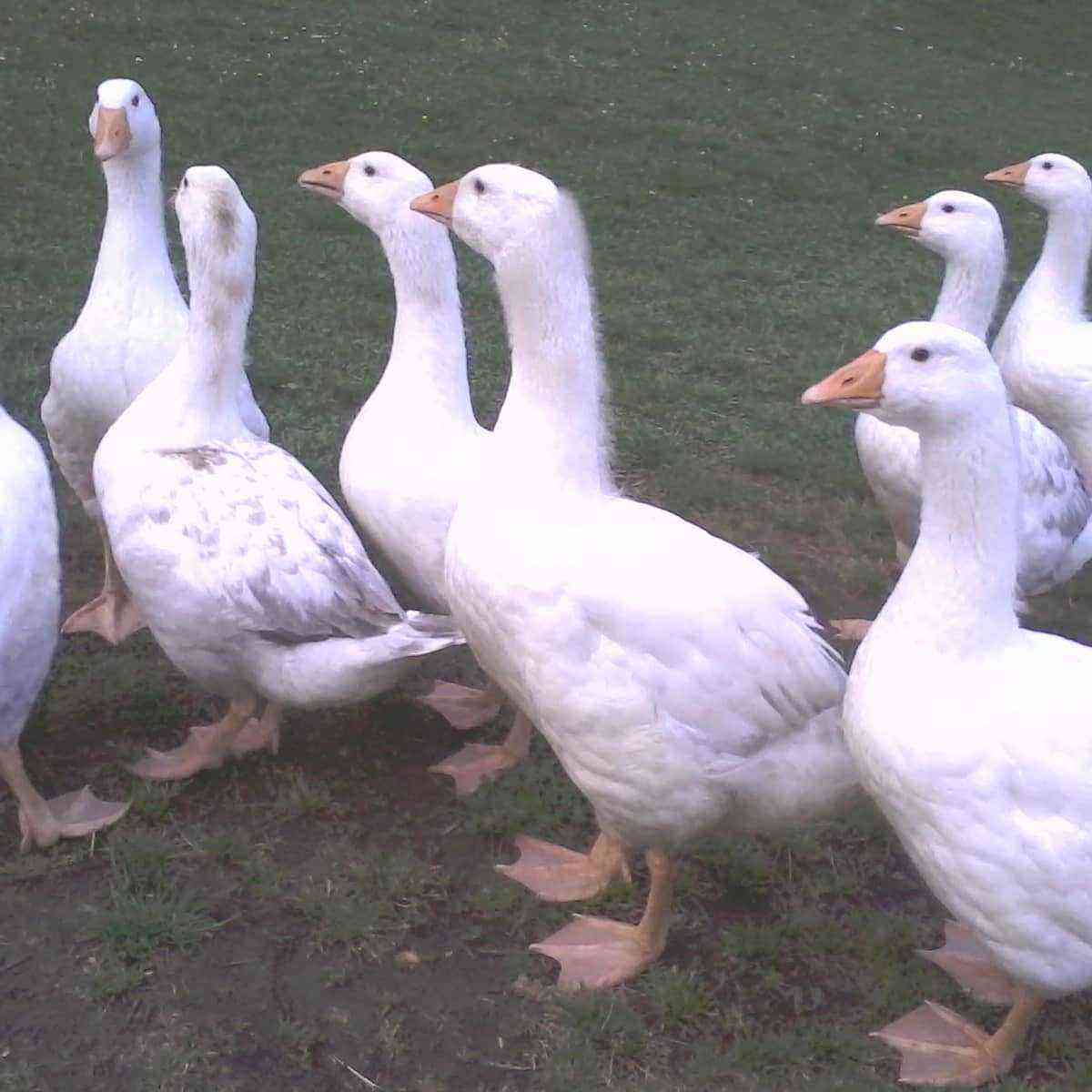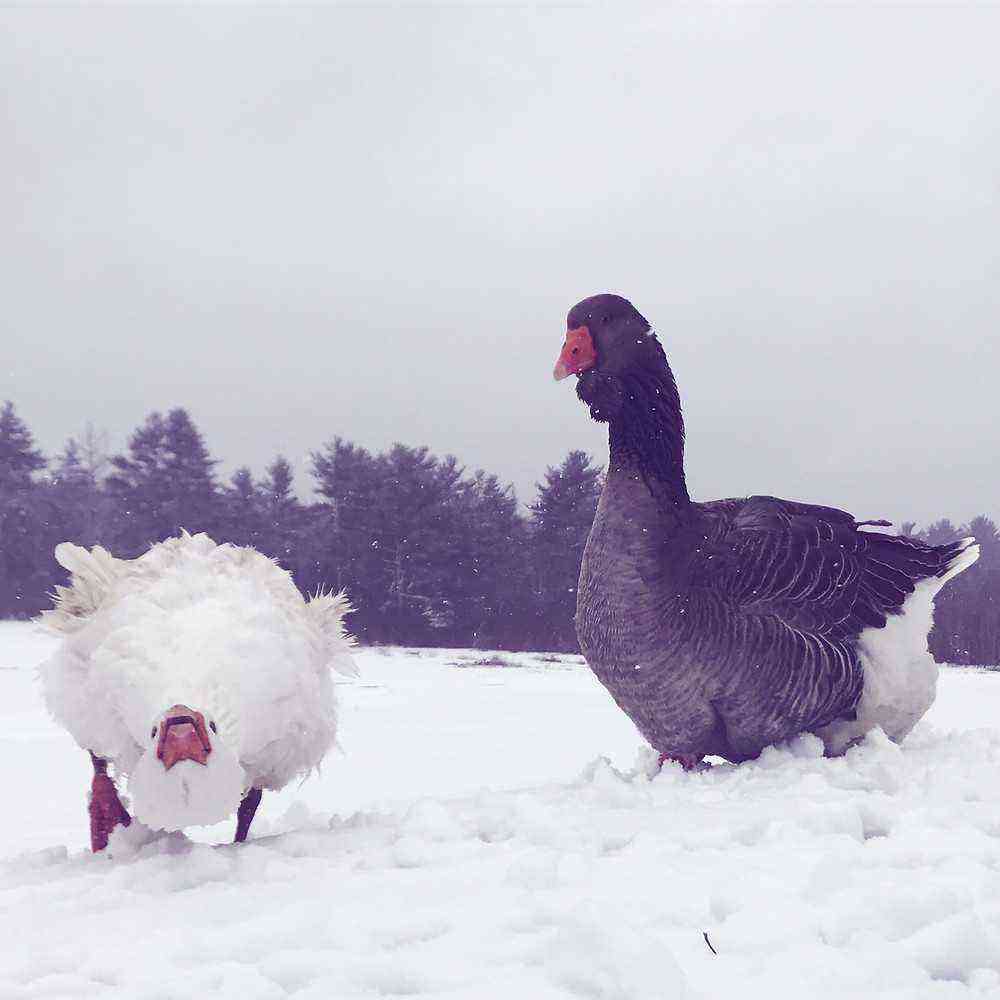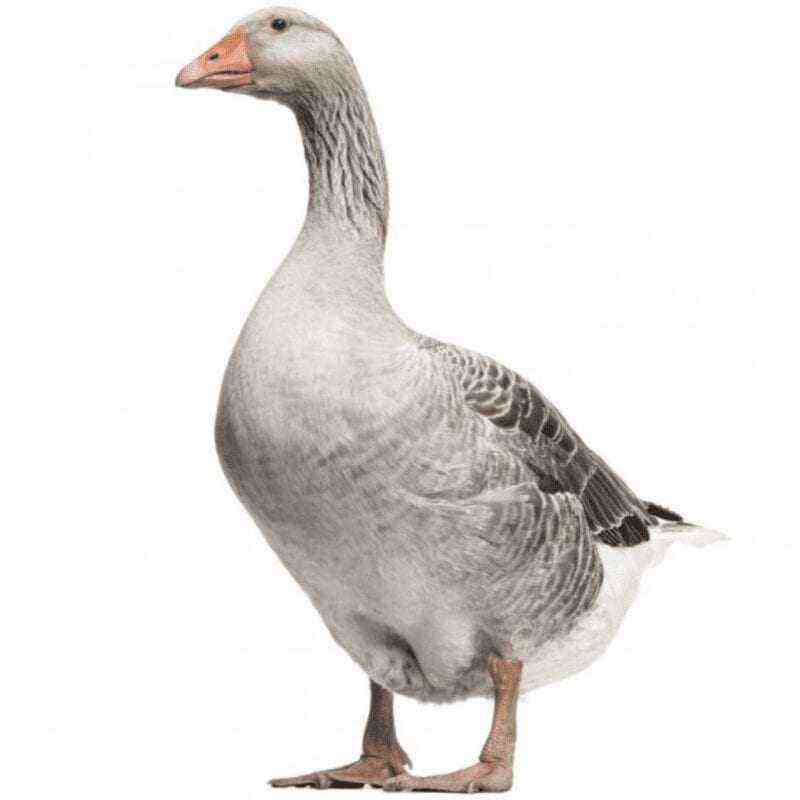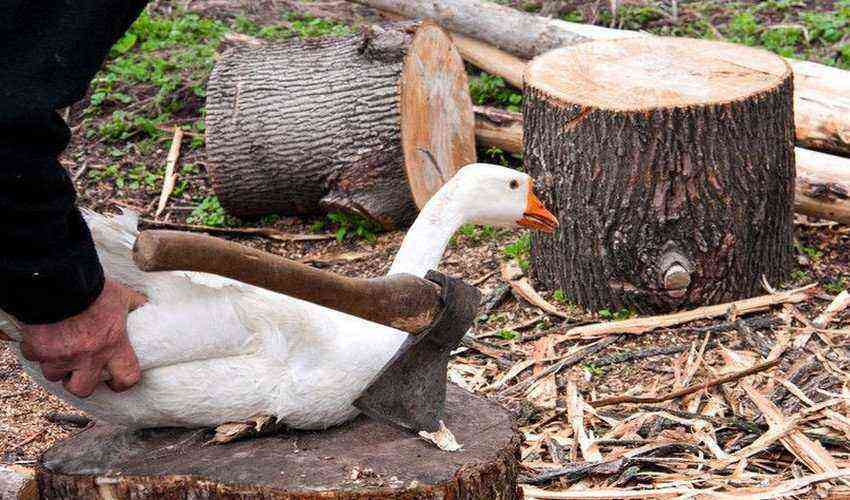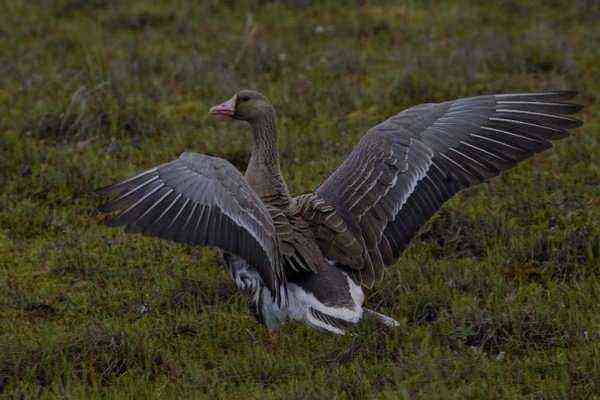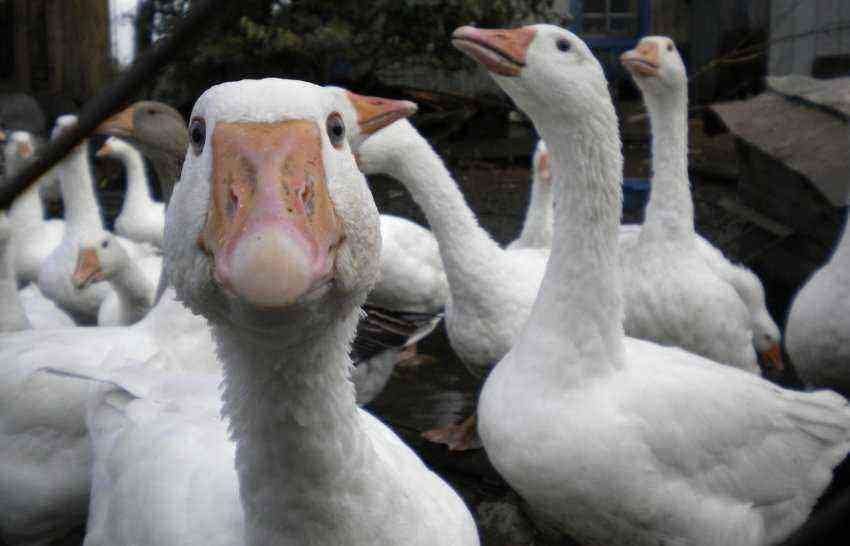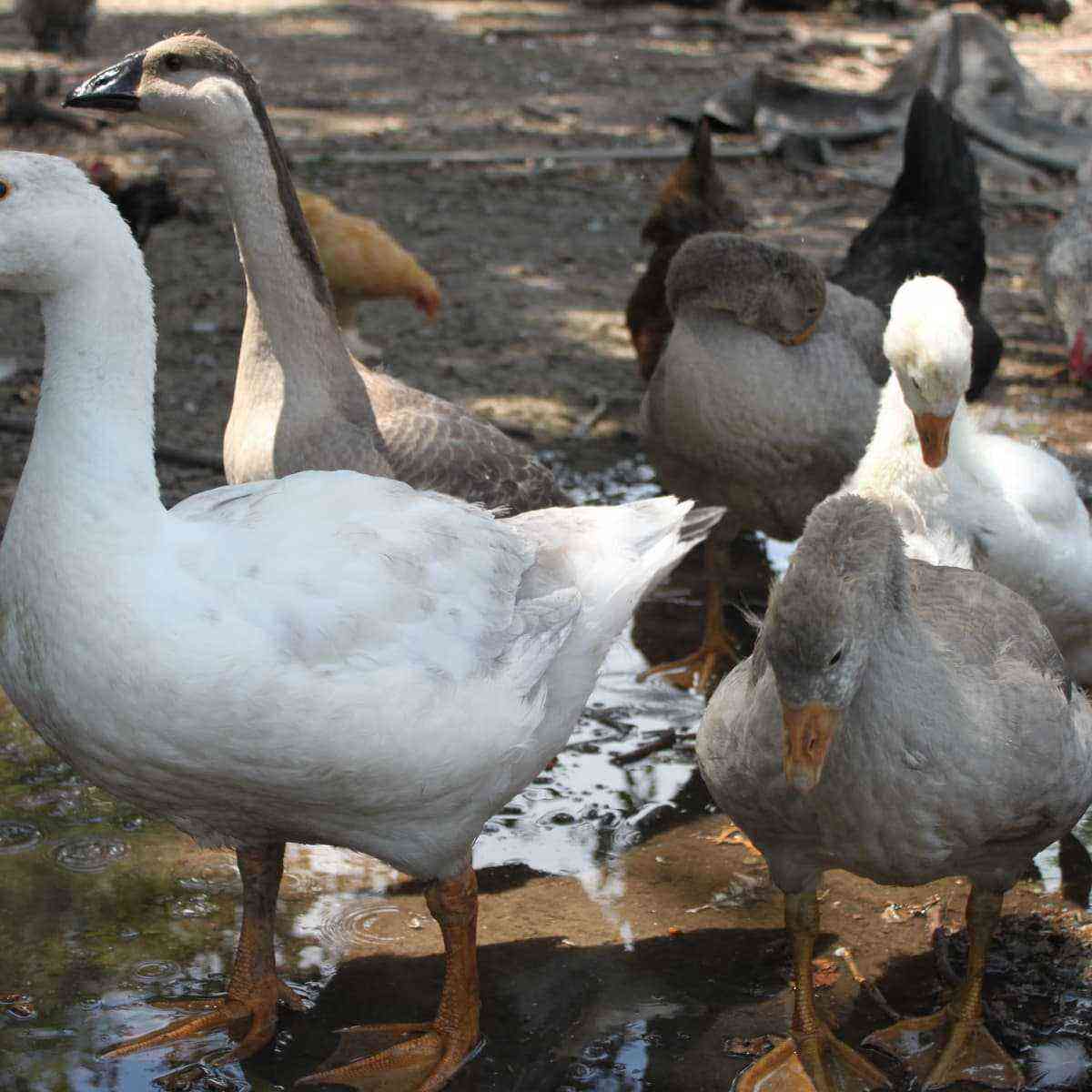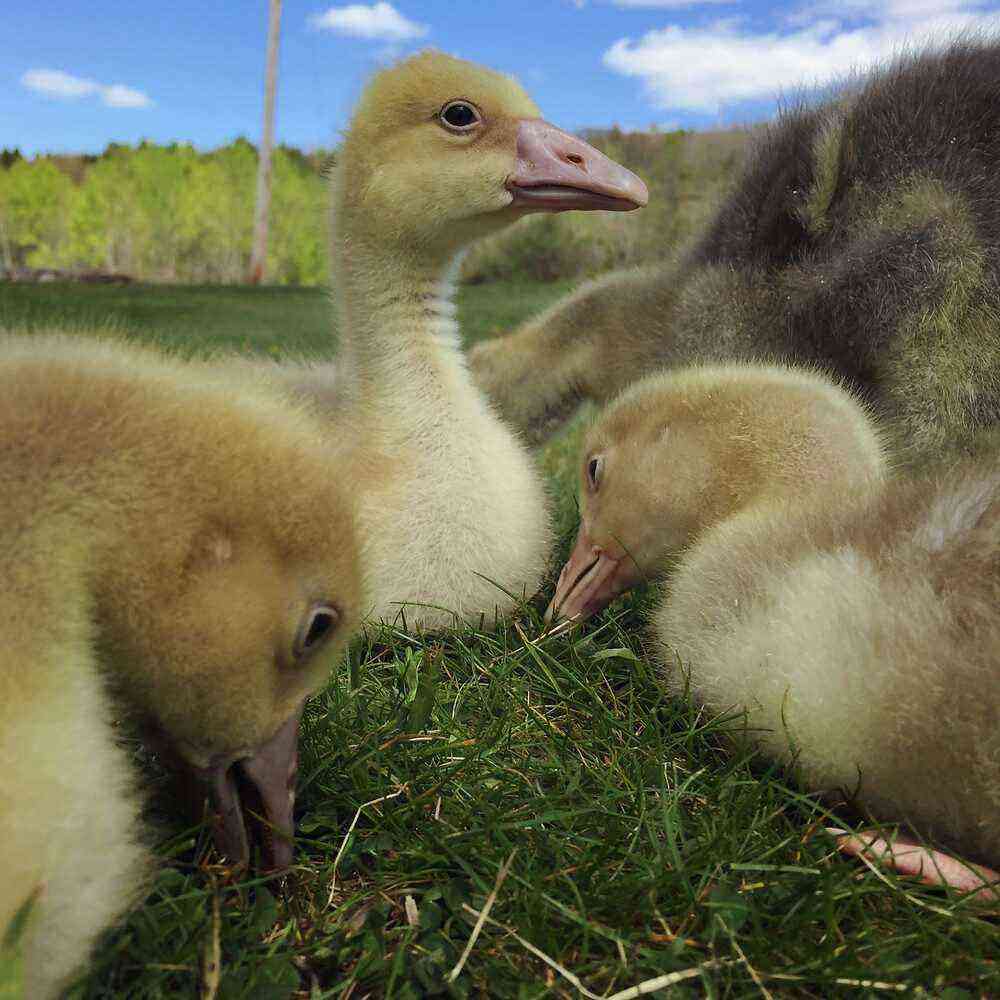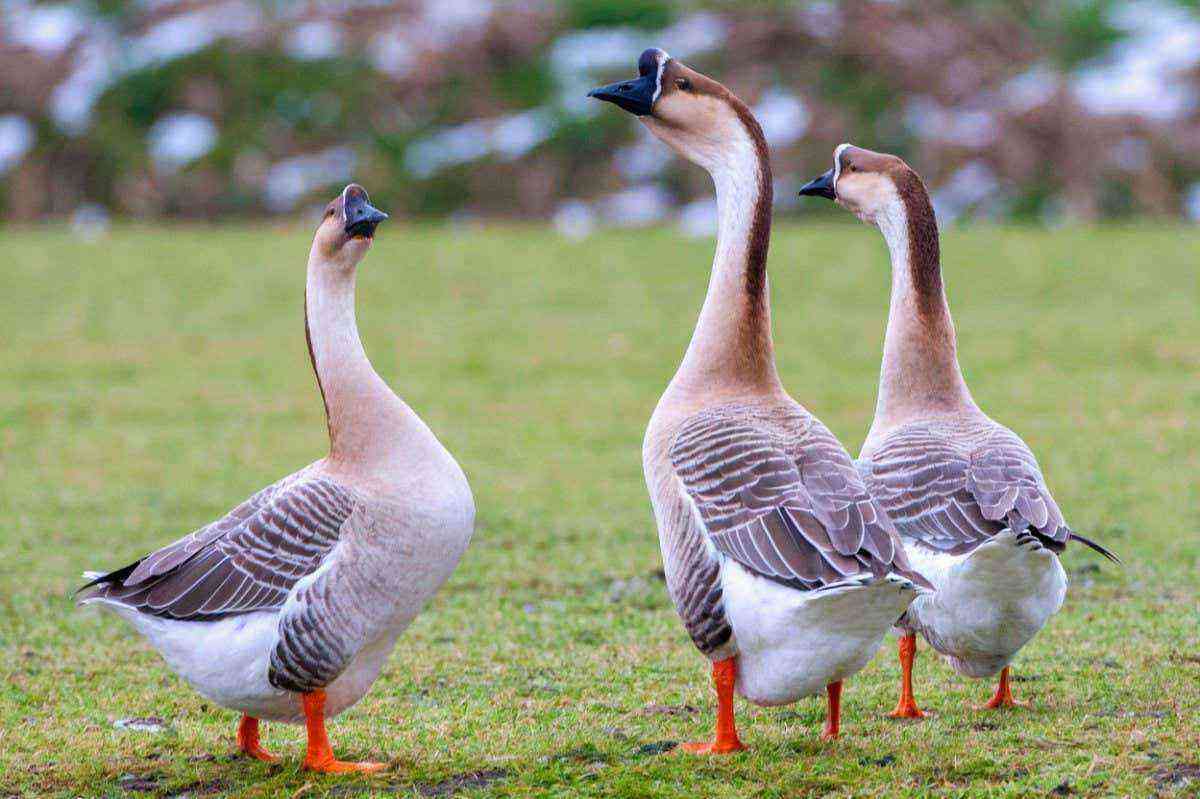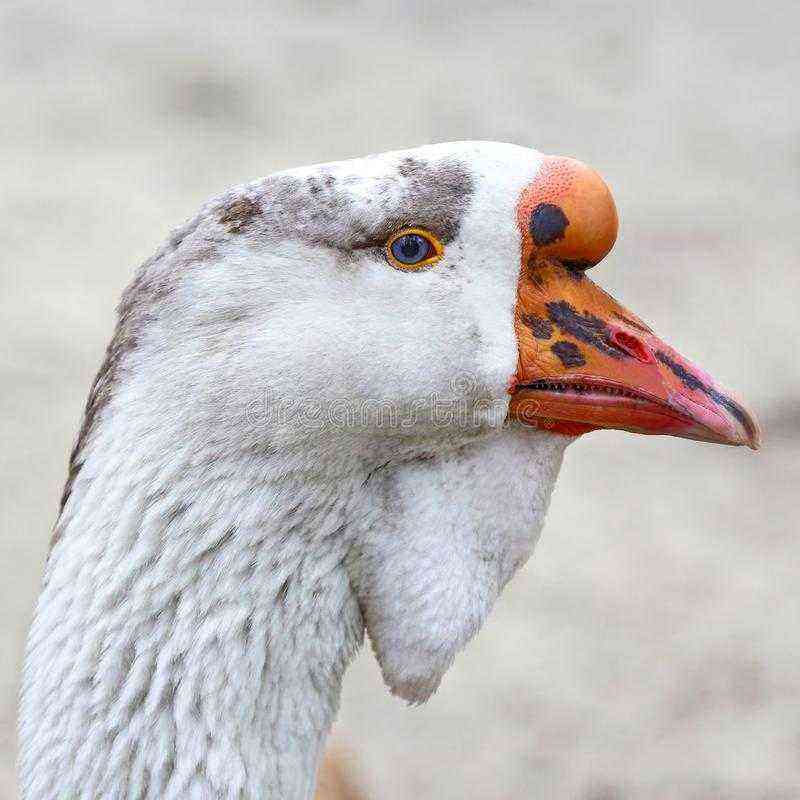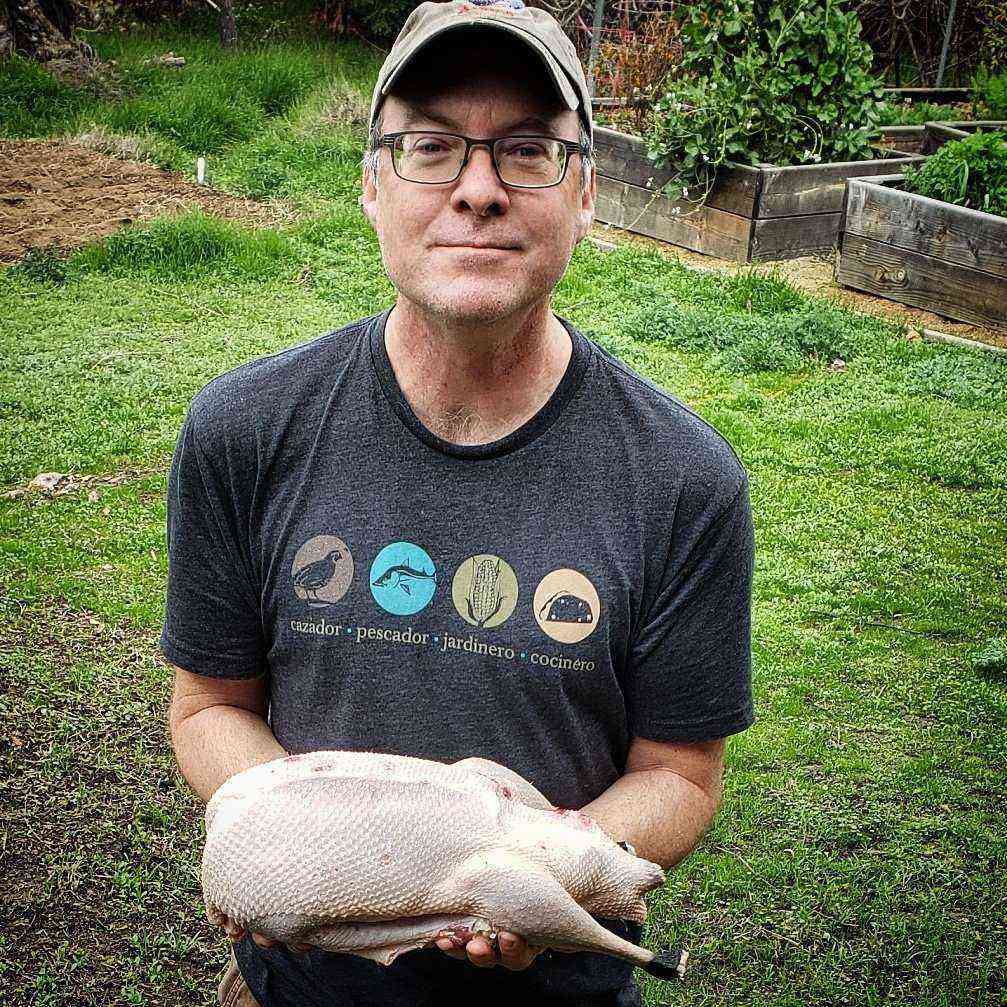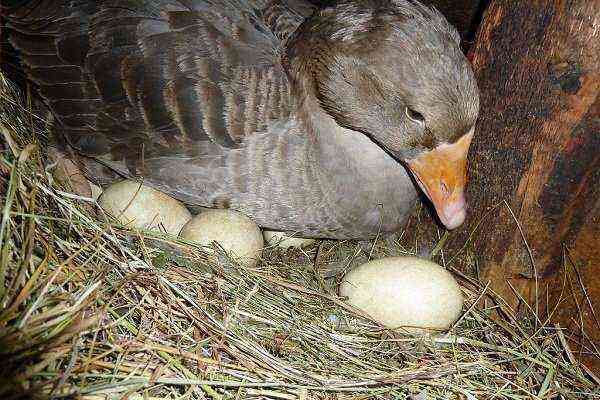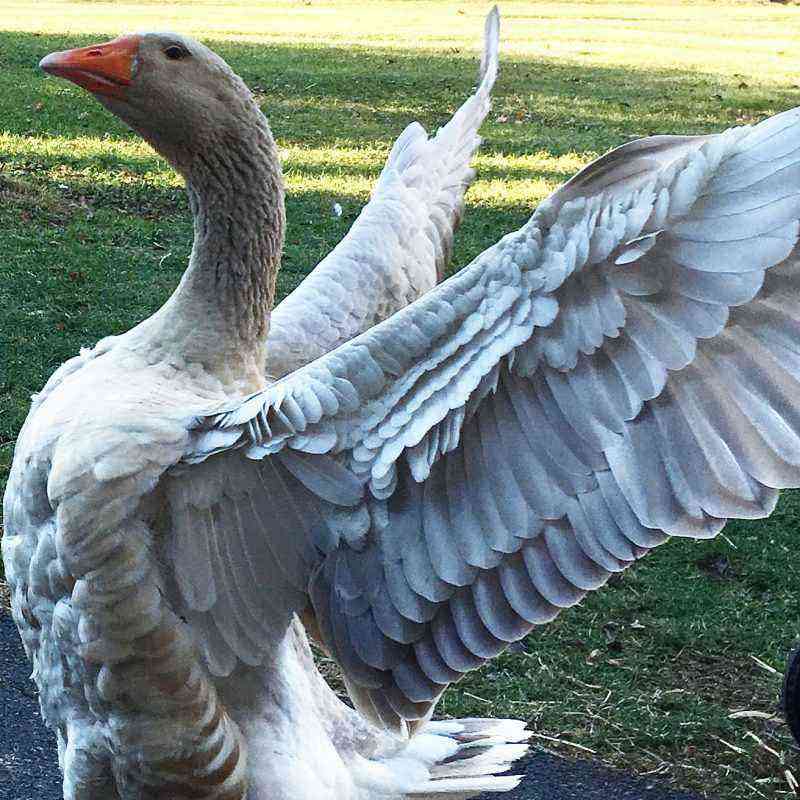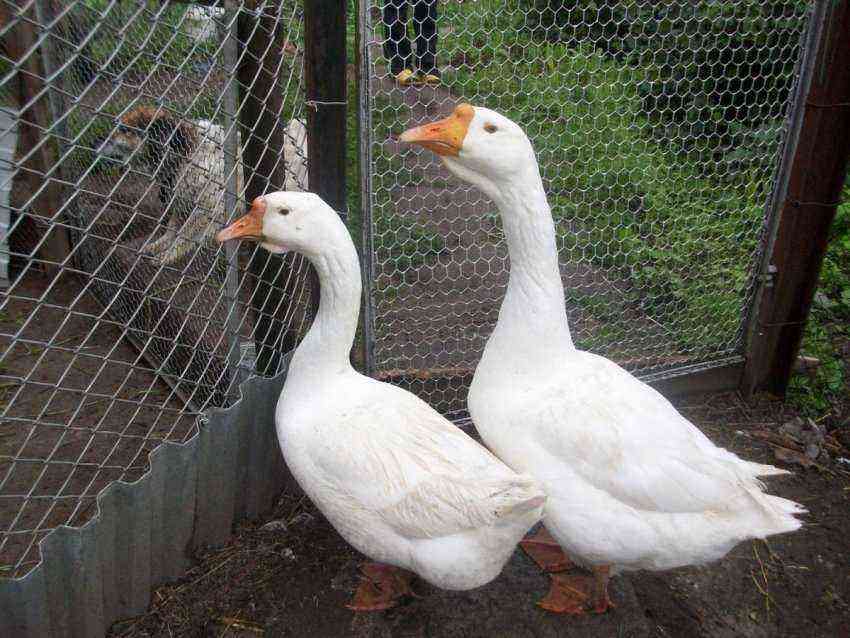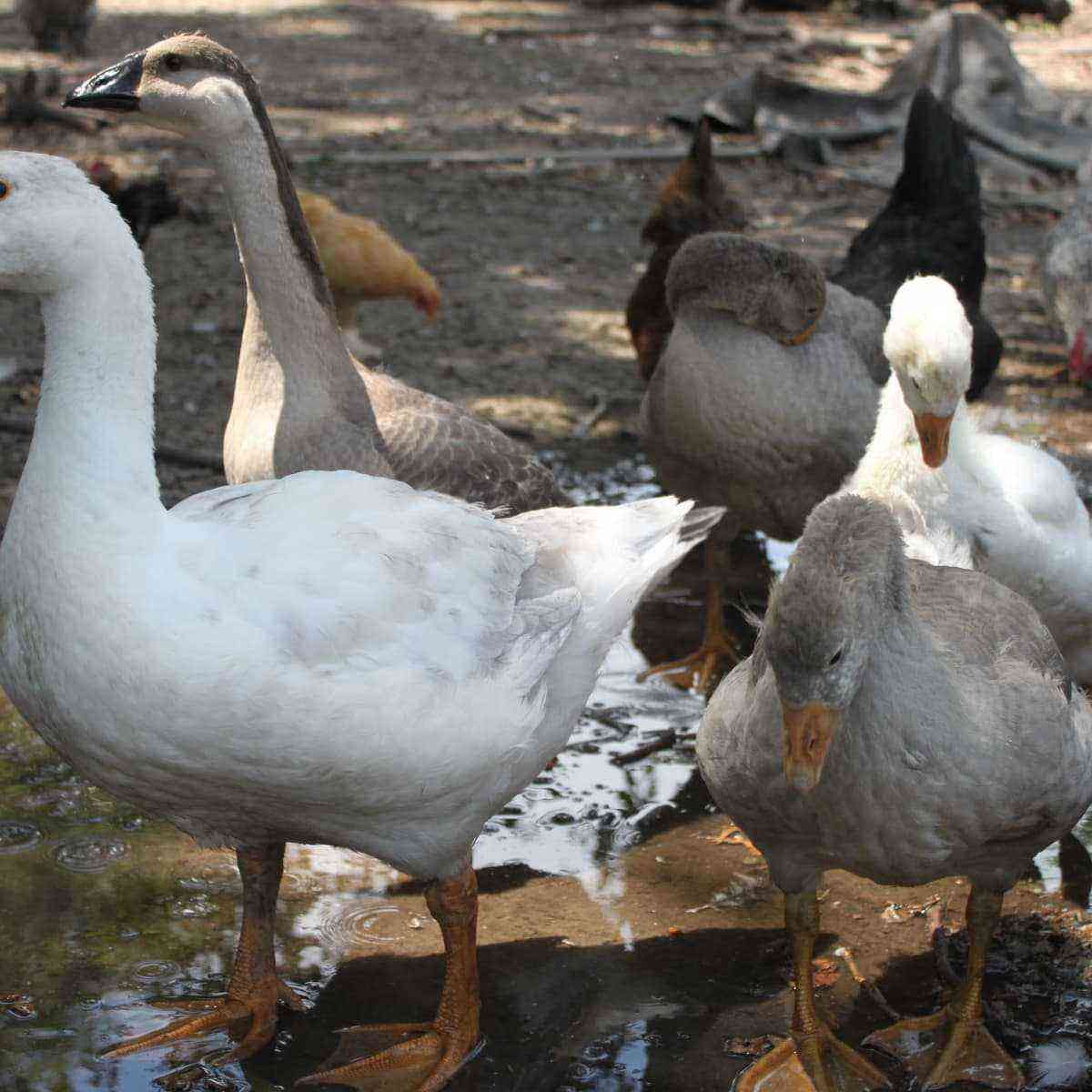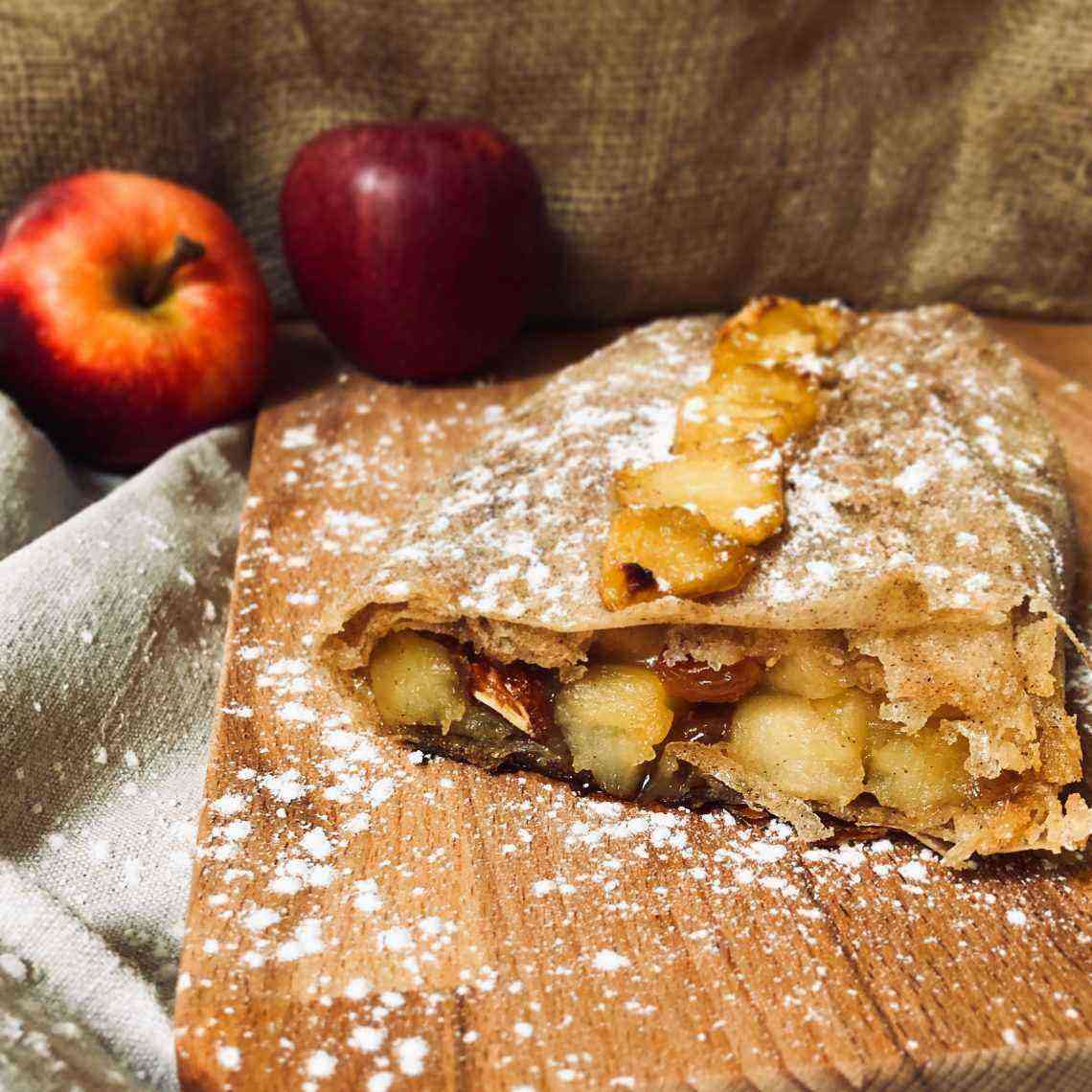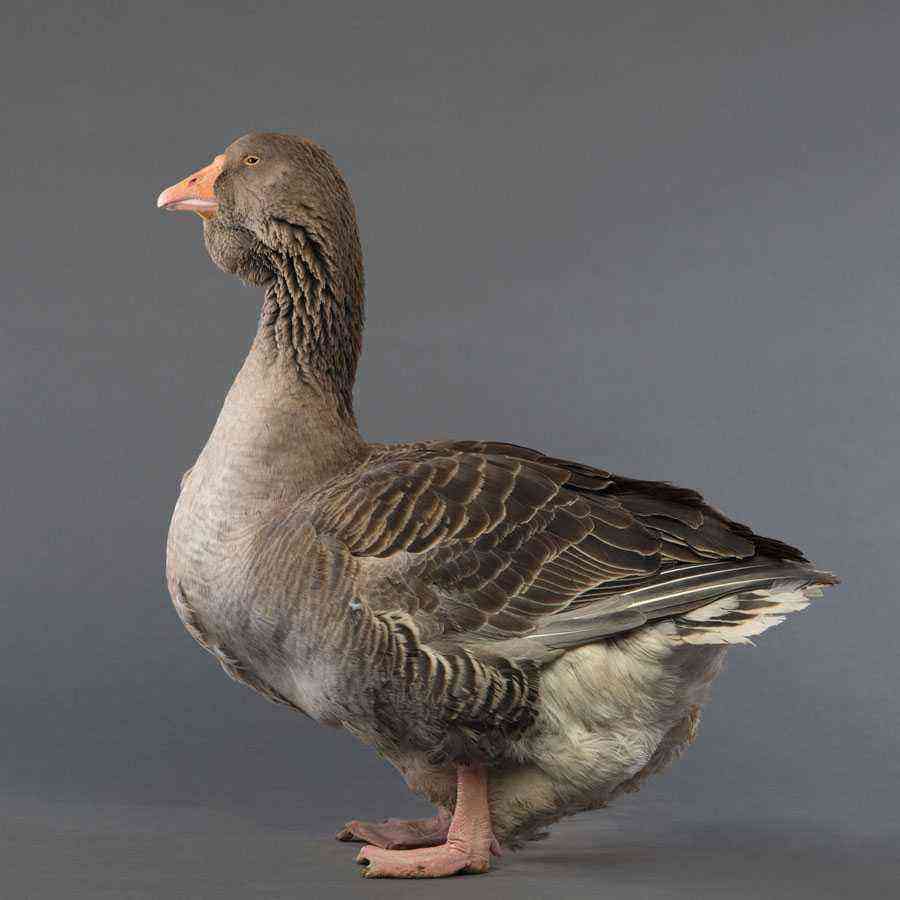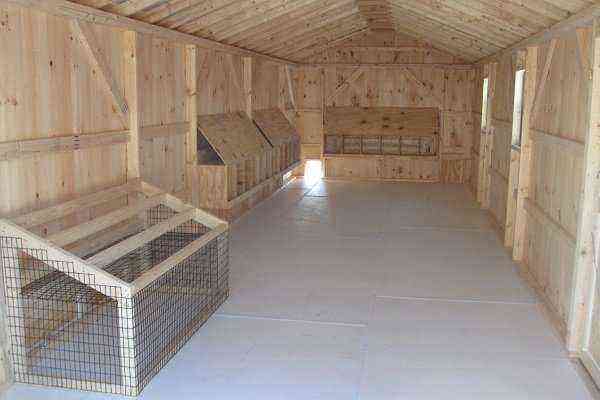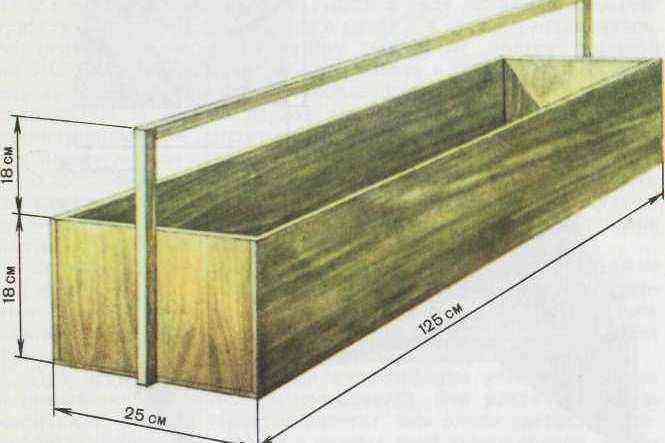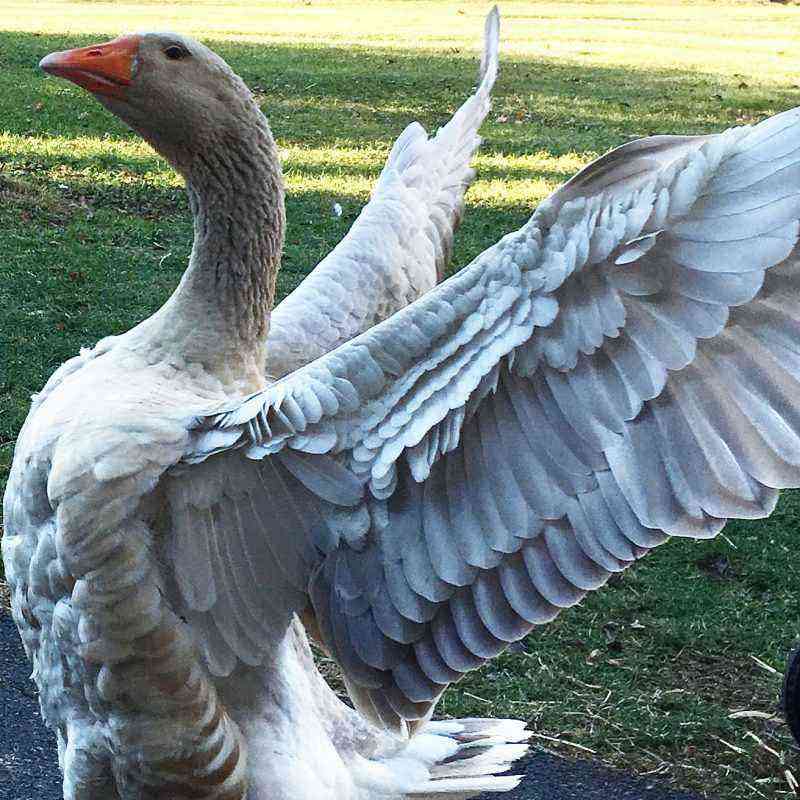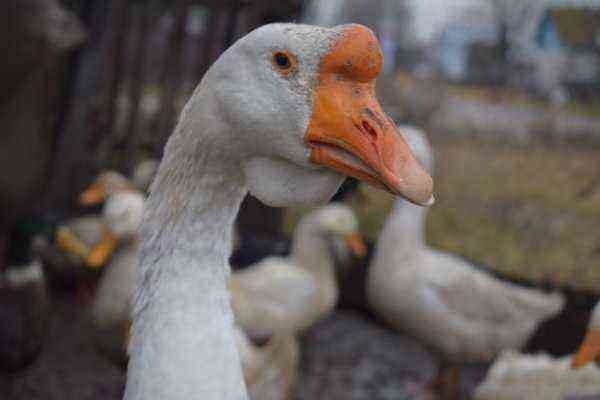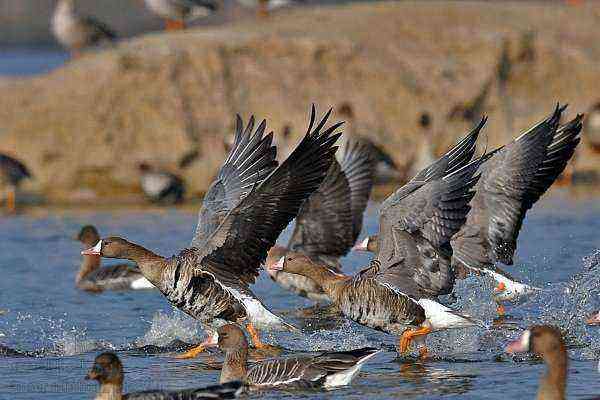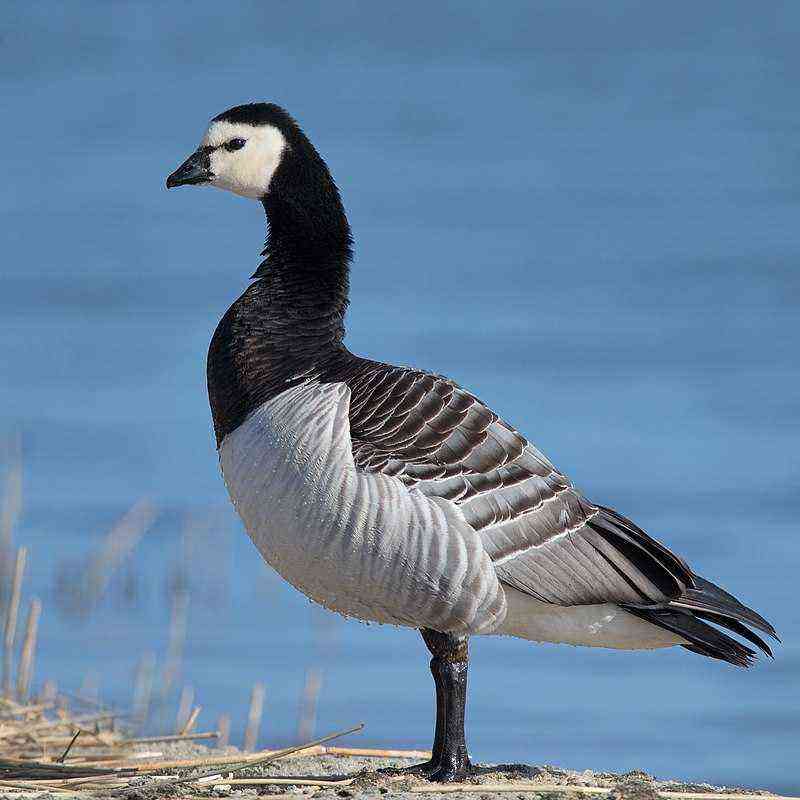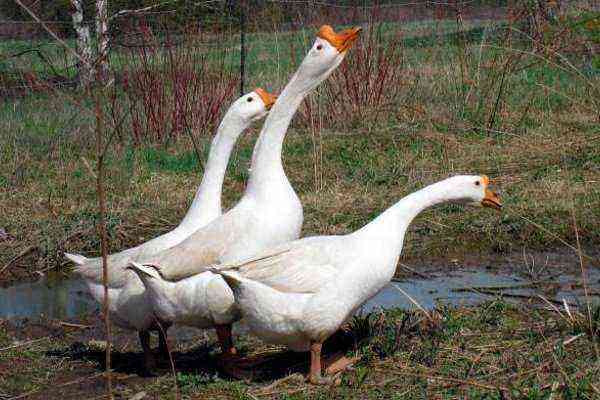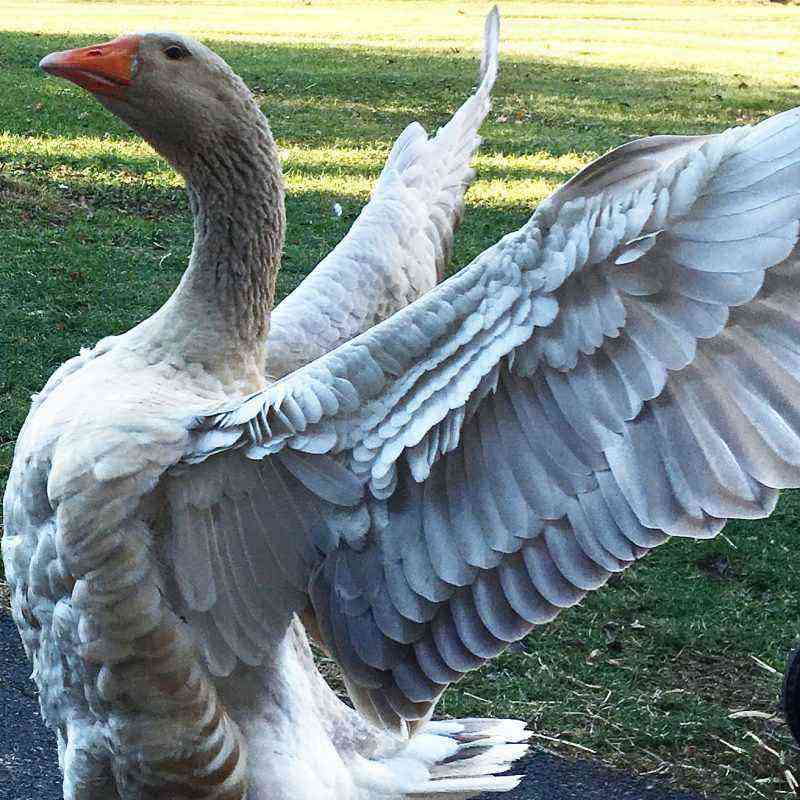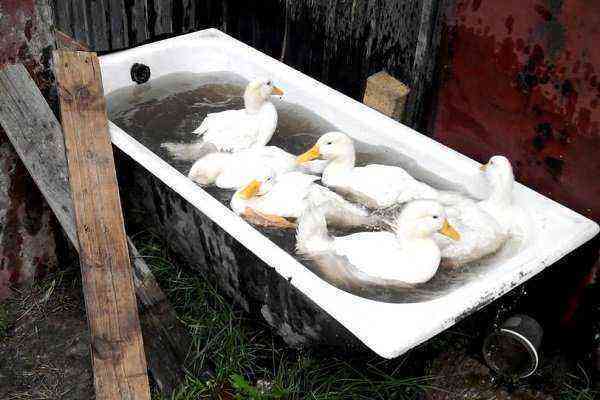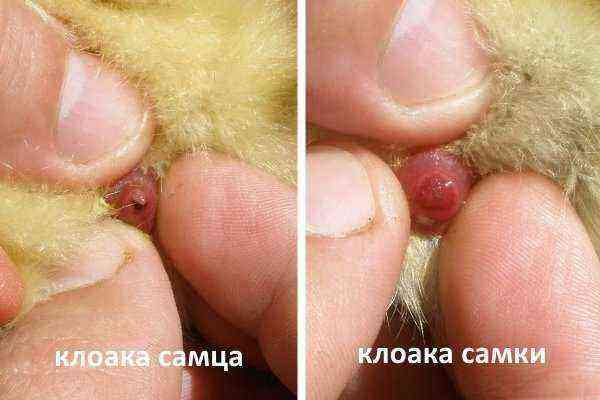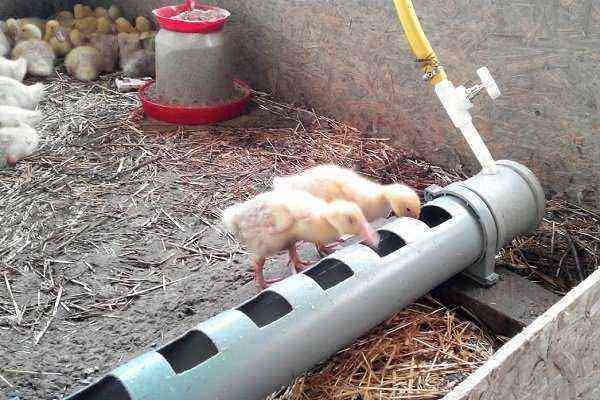Geese of the Large Gray breed belong to the meat-fat direction. They are in demand not only from producers, but also from owners of personal subsidiary plots because of their ability to quickly gain weight and unpretentiousness, both in care and nutrition.
Large gray goose
Large gray geese gain weight quickly
One goose can hatch up to 15 chicks from eggs
The large gray breed has an orange beak with a pink spot at the tip.
Breed history
At the beginning of the last century, a new breed of geese, Large Gray, was bred in Ukraine by crossing Romensky and Toulouse geese. The Toulouse breed is very unpretentious in maintenance and has a high vitality. These birds quickly gain weight and are valued for the high quality of the meat.
The main task in breeding a new breed was to increase the mass of the Toulouse variety while maintaining the original data. The first experimental group was named Borkovskie.
During the Second World War, the birds were evacuated to Tambov, and there the breeders continued to improve the geese. This is how the Big Gray Goose appeared.
Description and standards of large gray geese
In order not to make a mistake when buying and acquiring geese of this breed, they study the standards under which individuals should fit:
- small head;
- purse and bump are missing;
- the beak is orange with a pink spot at the tip;
- neck of medium length;
- the physique is massive, with protruding pectoral muscles;
- on a wide belly, two fat folds;
- steady paws of bright orange color;
- the color is predominantly gray, with light areas on the chest and a white underparts.
Females are slightly smaller than males and have a more fragile body structure. Males usually reach a weight of up to 7 kg, and when fed with concentrated feed, the weight can reach 9,5 kg. Geese on average weigh up to 6,5 kg.
Malformations in development
If you are going to buy geese of this breed for further breeding or choose individuals from your geese for breeding, they need to be carefully examined.
Permissible shortcomings in the selection:
- the border at the base of the beak is white;
- flight feathers are not grey;
- the pattern on the back and wings is blurry and does not look like “scales”;
- there is one fat fold on the stomach instead of two.
If during inspection you find a wallet or a bump on the forehead under the beak of a bird, then it is subject to rejection. It is also considered unacceptable if the chest is small, sharp and located high in relation to the body, and the crease on the abdomen is poorly developed.
Pros and cons of the breed
The large gray goose is considered one of the most successful breeds. When breeding these birds, you will receive the following benefits:
- Ease of maintenance. The gray goose is very unpretentious in nutrition, which significantly reduces the cost of its maintenance. For its breeding does not require the presence of a reservoir. He feels quite well when kept indoors.
- Trouble-free offspring. Although the egg-laying rate of these birds is average (about 40 pieces per season), the offspring are very viable and 75% of the chicks survive. You don’t have to take care of the masonry and young growth, the geese do an excellent job with this themselves. At the same time, females lay eggs until the age of 5 years, compared with 3 years of the same Toulouse breed.
- Speed of results. Young animals grow up quickly and by 9 weeks are already gaining weight of 5 kg. These birds are highly valued for their ability to build up their liver. It can reach up to 400 g.
- Down and feathers in life. You can pluck these birds twice a year. The down and feathers of the large gray breed of geese are very dense and are in demand in the production of outerwear and underwear.
Among the shortcomings of this breed, one can note the touchiness of the bird, which she remembers for a long time and, if possible, will definitely take revenge on her offender. At the same time, geese are quite sociable. With good maintenance and the absence of conflicts, they are quite peaceful.
Another disadvantage can be considered a rather loud cry of geese, with which they communicate.
Conditions of detention
These birds are quite unpretentious and frost-resistant, but this does not mean that they do not require care at all. In order for the geese to please you with high egg production for a long time, and for the young to quickly gain weight and not get sick, you must adhere to the following tips:
- It is important to provide the geese with a dry and clean habitat in order to eliminate goose diseases and reduce the cost of buying food. Indeed, when the feathers get wet, the goose loses heat faster, and eats more to keep warm.
- It is desirable to allocate a wooden room for birds, it can be made of clay concrete, the main thing is that there are no drafts in it. The floor must be raised at least 20 cm from the ground to prevent the bedding from getting wet.
- As bedding in the summer, sand with sawdust is perfect, and in winter – straw. In order for the straw to warm better, superphosphate is added to it (200 g per 1 sq. M). It also reduces the excretion of ammonia from bird droppings. Such a litter in the spring will serve as an excellent fertilizer.
- The litter is prepared in advance at the rate of 40 kg for one individual. For young animals, 7 kg of bedding material is sufficient. Indoors, you need to arrange straw nests with a cardboard or wooden fence. Feeders and drinkers should be long and low.
- Although this breed of geese does not require a reservoir, if you regularly delight your pets with a clean water bath in the summer, they will appreciate it. Water needs to be changed more often, it should not be dirty. Geese can get sick from polluted water. Therefore, ponds with stagnant water are also not suitable for them.
- If there are no trees in the household yard under which geese can hide from the scorching heat, then it is necessary to equip a canopy for this purpose.
An overview of the large gray breed of geese, as well as about keeping, feeding in the summer, watch the video:
Feeding rules
If you want the bird to quickly gain weight, then its feeding should be given great attention. Although Big Gray Geese are not picky eaters, there are a few tricks that will allow you to raise young as quickly as possible.
Summer food
In the spring-summer period, grazing is recommended to reduce costs. If you have a suitable meadow and pond in the area, then it will be enough to feed the geese once a day, in the morning or in the evening. Usually, such complementary foods include silage of legumes and cereals, bran, fresh grass, chopped root crops.
If the fattening of geese is carried out in order to increase meat or liver, granular compound feed and fatty foods must be included in the feed.
Winter food
In winter, the bird is fed 3 times a day. Juicy food is given mainly in the morning, and dry food in the afternoon. Juicy feeds include silage and root crops, which are boiled before use.
Dry food includes legumes and cereals in the form of wheat, oats, barley, corn, peas, both crushed and whole. They also feed on hay. Geese eat the softest parts from it, and what is left can be put on the bedding. Dried leaves harvested since summer are soaked, crushed and added to feed. And dry branches are steamed and placed in the house in an accessible place.
Throughout the year, it is recommended to give the bird vitamin complexes, and pour chalk and gravel in separate feeders to improve digestion. Drinkers should always have clean water available. The diet can include salt, meat and bone meal and duckweed (fresh or dry).
Reproduction
In the wild, most geese are monogamous, so when breeding this bird, it should be borne in mind that there should be no more than 2-3 females per male. At the very beginning, when forming a pack, you need to leave more males, because the females do not accept all of them. The outcast bird must be removed and the flocks and put on the meat. If such a goose is left anyway, then over time it will die.
The advantage of the Large Gray Geese is that the geese are excellent mother hens. Incubation of eggs lasts 28-30 days. In order for a goose to bring healthy offspring, you need to follow some rules:
- In February, a separate nest with high walls is arranged for each of them in a place where no one will interfere with the goose. They are taken out for feeding in turn.
- The temperature in the place where the geese are kept is maintained at around 12-16 degrees, and the daylight hours are extended by artificial lighting up to 14 hours.
- Before laying, more protein is introduced into the diet of geese, which enhances reproductive function. And during laying and hatching, the bird is given fermented milk products and soy to meet the need for calcium. If this is not done, then the goose may begin to peck eggs.
- Laying starts in March. Birds of this breed lay eggs every two days, they can be collected and kept in a cool place, so that later they can be put together for incubation.
By what signs you can distinguish a gander from a goose, read the following article.
Rearing chicks
In April, with good care and quality nutrition, the goose hatches up to 15 chicks from eggs. The main thing that is required from the owner is not to irritate the bird and not actively interfere in the upbringing of the young.
In the first week, hatched chicks are fed with a crushed mixture of corn or wheat with the addition of a boiled egg or cottage cheese. Then finely chopped boiled root crops and cake are introduced into the diet. It is important that the prepared mixture is moist, but crumbly and does not clog the nasal openings in the beak.
In the first two months there is an active growth of goslings. For full development, they need to eat about 1-2 kg of grain and up to 2,5-6 kg of green fodder per 9 kg of weight.
If you are breeding a bird for slaughter, it is best to keep it in a paddock. The diet of such young animals should consist mainly of concentrated feed and greens.
At 4 months, geese gain sufficient weight and begin to feather. Their further cultivation is advisable only for breeding.
How a large gray goose hatches chicks is shown in the following video:
Where to buy and cost?
Geese of the Large Gray breed are quite popular. They tolerate cold well and successfully interbreed with other breeds, so they have spread throughout Russia.
You can buy these birds in specialized nurseries:
Name
Contact details
Ecofazenda
http://ecofazenda.ru/
Russia, Moscow region, Leninsky district, Misaylovo village, Pervomaiskaya street, 84.
+7(964)772-00-79
+7(926)077-16-00
ekofazenda@yandex.ru
»SP-ARGO»
https://sp-agro.tiu.ru/
Russia, Moscow region, village Ploshchevo, st. Zapovednaya, Aleksandrovsky district, near Sergiev Posad.
+7(495)142-73-80 городской (многоканальный)
+7(926)880-18-55 Алексей
+7(925)209-38-57 Мария
fermer-plochevo@yandex.ru
Goat Dereza Farm
http://sibkoza.ru/
21 km of the Yenisei tract opposite the village of Pridorozhny
Krasnoyarsk, Krasnoyarsk Territory.
56°13’29.6″N 92°58’22.8″E
56.224884, 92.972988
+7(908)020-01-71
krasfermer@rambler.ru
“Goose Farm”
http://гусиная-ферма.рф/
Alferovo village, Chekhovsky district, Moscow region
+7(916)751-91-07
+7(965)178-38-71
daniil17gus@gmail.com
Prices vary from producer to producer and fluctuate quite a lot, especially for adult birds. You can purchase a hatching egg at a price of 100 to 150 rubles. A one-day-old chick costs from 160 to 400 rubles. An adult bird is sold from 800 to 2000 rubles.
Large Gray Goose Reviews
Olga, 46 years old, Tula region. Yes, these geese are very beautiful. I keep Large Grays and Hungarians. The chicks have grown up, they are already 3,5 months old. And, despite the fact that the Grays are much smaller, they are at the head of the pack! The goose, also from the Grays, became the leader, we call him the Evil Goose! He is very loud and demanding, and there is more than enough obstinacy. They screw up, of course. We never get bored with them. Denis Olegovich, 24 years old, student, Kyiv. I have been raising these geese for only a year. A flock of 20 birds, very pleased with them. Basically, I have them on free pasture, only in the evening I feed them with oats. Three-month-old goslings have already gained 5 kg. I used to breed the Linda breed, but I liked these ones much more. I want to divorce them. I think they are worth it! Very beautiful and graceful geese. Alexander, 41 years old, owner of a personal subsidiary plot, Voronezh region. One of the main advantages of this bird is that they are practically not afraid of frost. It was only this year that my hands reached to make a canopy, otherwise after every rain, during the molt, the sight was pitiful. Please note that geese and ducks hide their paws under the wing – they have a “stove” there.
Reviews about this breed of geese are positive. The unpretentiousness of this bird makes caring for it easy and quite economical, and the result will pleasantly please. And if in the early 2000s it was rather problematic to acquire a Large Gray Goose, now more and more nurseries are breeding them, and a large number of people are acquiring Gray Geese for their farms.
